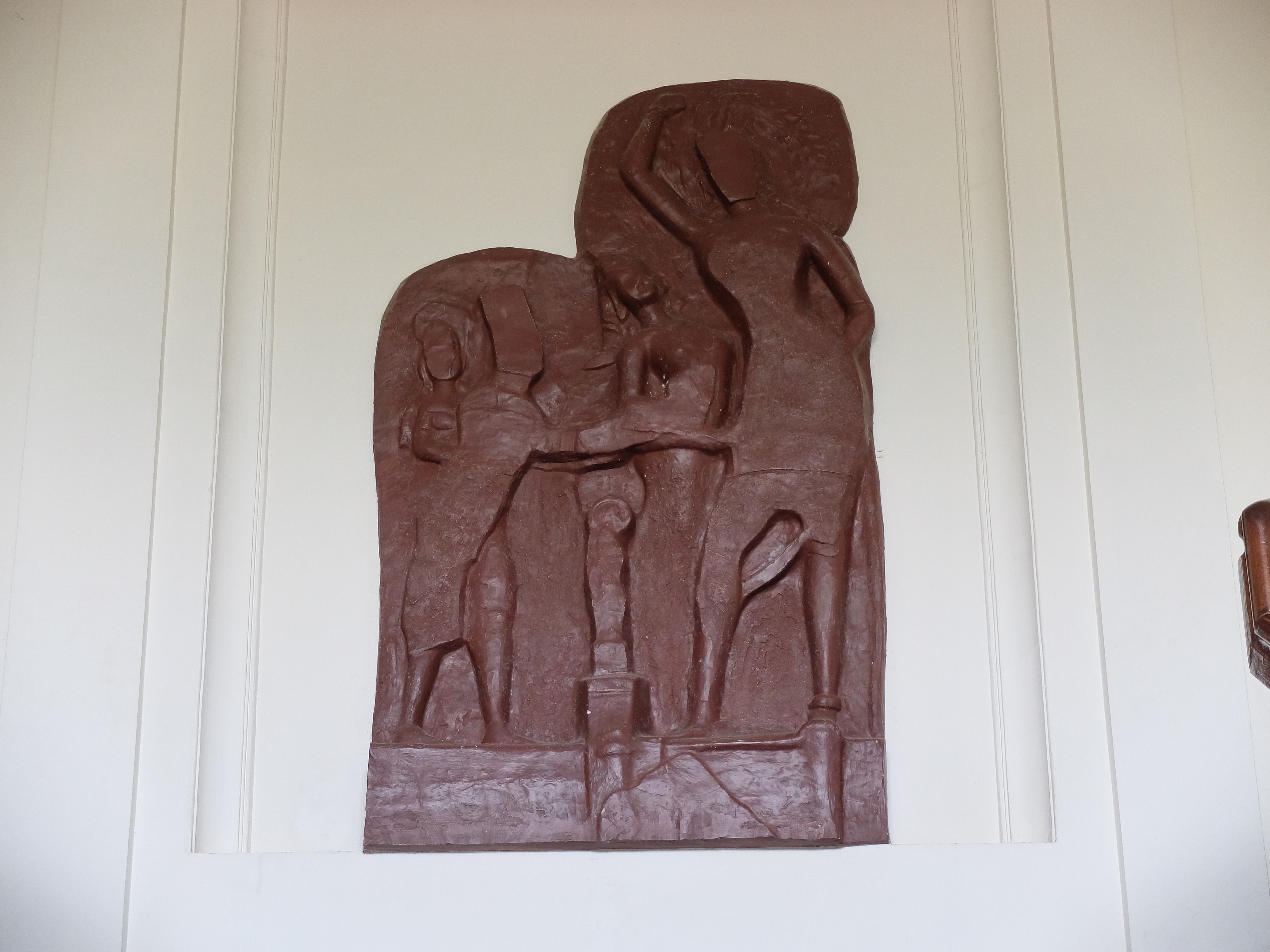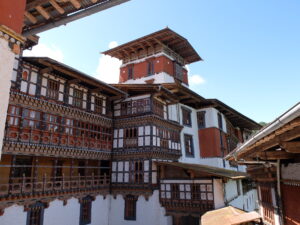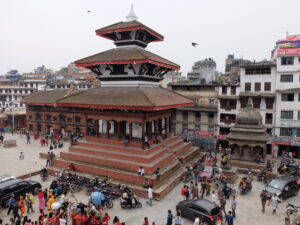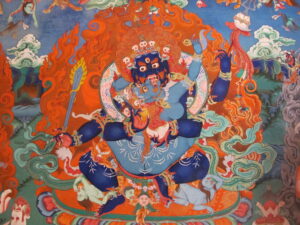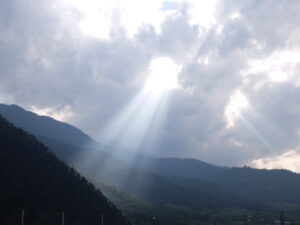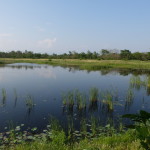
It’s no surprise that adherents to three of the great religions established in the last three thousand years revere places associated with the lives of the great prophets who founded them. Not the least of the holy places are the sites where they were born – Mohammed in Mecca, Jesus in Bethlehem, Buddha in Lumbini, Nepal. They may have lived and done their most significant acts elsewhere – Buddha in Bodh Gaya India, Jesus in Jerusalem, Mohammed in Medina. But it’s natural that people are awestruck by the places where it all began, with Mecca being the most important of all. There they can feel not just the birth of their prophet, but also that first trickle that became the mighty river of their faith.
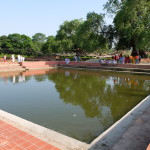
We have not visited two of these, but we made a side trip within Nepal to Lumbini. Here Buddha’s story begins as the prince Siddhartha. This is a story we have seen illustrated many times in stone bas-reliefs (such as Borobudur, Indonesia), on painted walls (as at the monasteries of Leh, Ladakh), in stone pillars (Sanchi, Bhopal India) and in Buddhist sites all around SE Asia. All start with the royal life of his parents in Kapilavastu, somewhere in India or Nepal. In the middle of the 6th century BC, his mother, Maya Devi, Goddess Maya, was traveling to her hometown at Devadaha, stopping at Lumbini just north of the current India-Nepal border. She bathed in a pool, a large well at Lumbini now considered sacred. Then nearby under a tree, she raised her arm for support and Siddhartha emerged from her armpit. In most depictions, he is a homunculus, a tiny figure of a mature person.
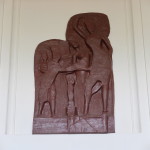
Back at his royal home, he was raised in luxury, sheltered from hardship and the real world. He was a prince gracious to his people and adept at archery, hunting and all the usual royal preoccupations. He had all he could want, in the material world, even a beautiful princess as wife and a healthy son.
Then he discovered the world of troubles. On an expedition, he saw an old man, a dead man and an ailing man – people afflicted in ways he had been sheltered from. These were things he needed to understand so one night he left all his luxuries, sneaking away from the palace, never to return. His journey of discovery led him to try being a hermit, self-denial and starvation, and so on before his understanding matured. He began to preach about the impermanence of all material things, including a man’s life. He talked about the holy work of finding within the higher level of consciousness to separate oneself from that world and achieve nirvana.
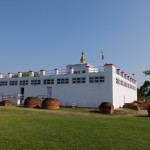
Others began to follow him as disciples, later to pass on his teachings or dharma. As often happens, their interpretations led to many different understandings of the right path, but even in their distinctness they don’t seem to have become as divisive as in some other religions. His physical body died under a bodhi tree at some 80 years of age, but he had already reached that transcendent state that even today’s followers aim to achieve. Most fail, but at least they find a better way to live the lives they are given.
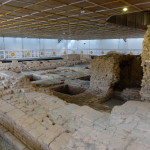
All this began at Lumbini. Since Buddha’s time, the site has been considered sacred. Within the relatively new, fortress-like structure housing the spot, the Maya Devi temple, caretakers have preserved and restored foundations from temples back at least to the 3rd century BC and possibly Buddha’s time. In the grounds nearby around the sacred pool, red brick remains, just a quarter meter to meter high, show where stupas and prayer halls stood from that time or in the 1000 years following. An old bodhi tree shades the pool. When we visited, hundreds of Nepali and Indian visitors walked about, lingering at the pool.
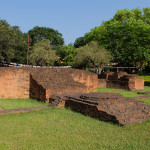
Also close to the temple is what appears to be a refurbished pillar erected in 249BC by Ashoka, sort of an Alexander the Great of the Indus valley. After much conquest of other realms in bloody battles, Ashoka had his own awakening around 260 BC, forswearing slaughter and converting to Buddhism. In India, he frequently honored Buddha in stone, most notably at Sanchi near Bhopal (click here to read about Sanchi) and established an admirable rule of law. Here at Lumbini he honored Buddha with this column. His inscription praises himself, then notes that the pillar honors Buddha and the site. It concludes pragmatically: “The lord having been born here, the tax of the Lumbini village was reduced to the eighth part only.”
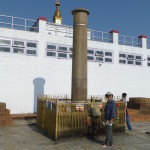
The precise spot of the birth is inside the temple, according to ancient historical reports. We are not Buddhists, but we felt the thrill of being in this revered place. A rough flat stone in the ground protected by a glass casing is purportedly where the birth happened, though the stone was only unearthed in 1996. Visitors stop in reverence, pray or drop rupees onto the spot. Above, nearly hidden by the drab, ugly drop ceiling is a damaged, but graceful 4th century bas-relief of the moment, as the sizable baby floats between an almost dancing Maya on the right, arm upraised to the overarching tree, and her helpful sister on the left.
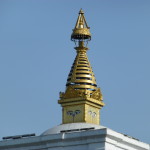
We found that many other western visitors, mostly but not exclusively young, feel the power of this place. At the Three Fusion Cafe, we talked with a dozen or so from Colombia, Brazil, England and California – all of whom had chosen to practice meditation here for up to ten days, though they could have gone to India’s mecca of yoga and meditation near the sacred Ganges at Rishkesh.
The birth site and its monuments are located in a large circle, the Sacred Garden, set deep within the southern third of the overall plot dedicated to honoring Buddha at Lumbini. The entire site is a forested rectangle measuring reportedly 1x3miles (1.6 x 5 kilometers).
You could feel the great respect with which this place had been invested, though its often maladroit design and execution are annoying, perhaps just because so much of it is still under development.
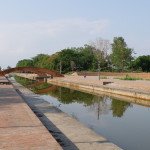
The northern third of the rectangle is quite different. The lower part is an attractive Cultural Center including a museum, library, research centre, etc. The upper part of this section is under development as a tourist haven, to include new hotels and restaurants – and oddly a sarus crane sanctuary. We did not see this part, but we wondered how badly affected would be the local eateries and guesthouses when all that was done. Perhaps the young and feckless will still prefer those.
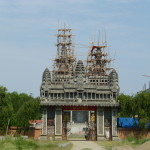
The middle third of the rectangle just north of the Sacred Garden is called the monastic zone, where dozens of countries and Buddhist sects have erected shrines, stupas and monasteries to honor their faith, as well as celebrate the unique architectural style of their own Buddhist temples. It’s a kind of holy Epcot Center.
We expected complexes from the Asian countries, such as Thailand with its cascading, winged roofs, Myanmar with its huge golden stupa, or Cambodia with its homage to Angkor. But we were a bit surprised to find temples from France (a stupa amidst a formal garden) and Austria (in a neo-classical secessionist style) as well as Germany (a meticulous lotus-like stupa).
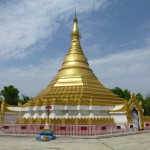
Though it seems orderly from the otherwise nearly useless map supplied by the tourist office, now it’s all a bit of a mess, with maybe half of the 42 intended sites finished or in a reasonable state of construction. Even the grand canal running down the middle of the monastic zone is an unappealing dusty red brick. Roads begin and end haphazardly.
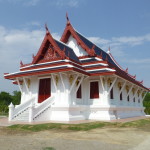
We moved to and fro on these roads by bicycle, covering the significant distances relatively quickly in the baking sun; others prefer the expensive $15 USD bike rickshaws with a local Nepali providing the motive energy. True pilgrims go by foot; we saw many large groups of well-dressed visitors trooping along the roads, site by site.
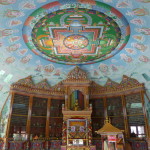
The intent, we think, was to have functioning monasteries; certainly the SE Asian countries have built residential buildings and prayer halls for that purpose. During our visit, though, we saw little activity. Perhaps it was just an inopportune time. More monks seem to be touring the monastic zone than actually living in it.
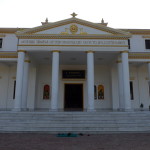
At least at the Chinese temple, in the red light of the late afternoon, five monks filled its prayer hall with sacred sound, chanting ancient prayers, ringing bells and banging drums, while they circled the large rotund Chinese Buddha in the center of the hall.
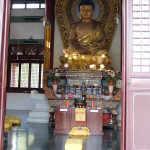
At that moment Lumbini was far from being a tourist attraction; it was a place of deep devotion.
(Also, for more pictures from Nepal, Tibet and Bhutan, CLICK HERE to view the slideshow at the end of the Nepal-Tibet-Bhutan itinerary page.)


